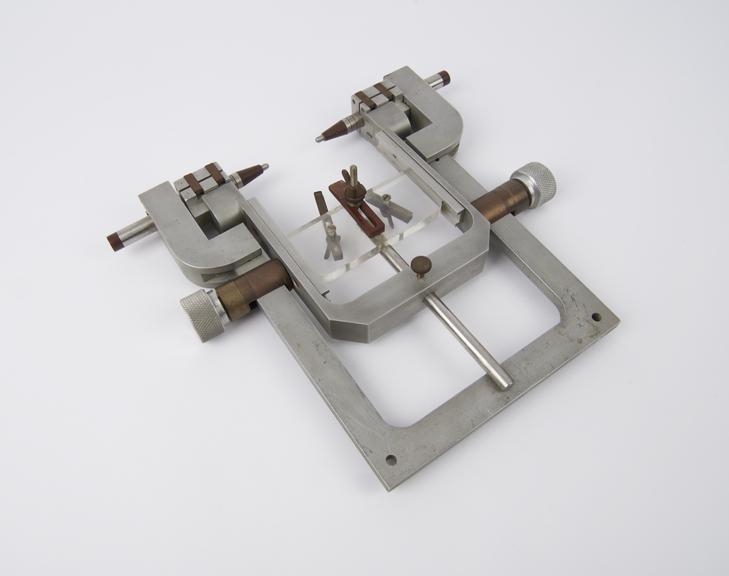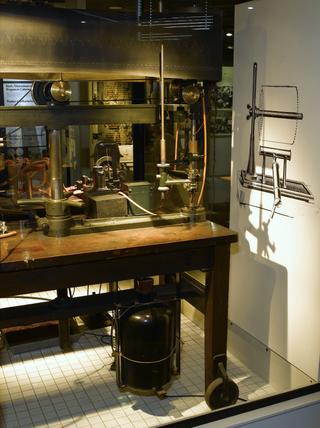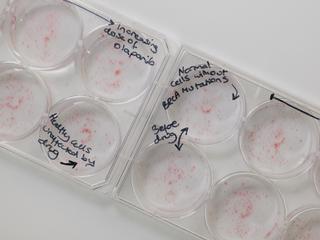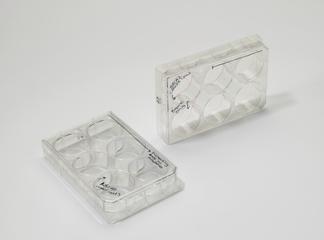

Stereotactic head clamp, mid - 1970s. Used for small animals (especially cats), made in Oxford Physiology Department.
Investigations involving the brain, whether animal or human, must be precise and careful. This is so they do not unnecessarily damage the surrounding tissue. This apparatus is known as a stereotactic (or stereotaxic) head clamp. It pinpoints areas of the brain in small animals (especially cats) during laboratory experiments. The University of Oxford, Physiology Department made it and donated it to the Science Museum.
Animal experimentation for scientific and medical research remains controversial. One main argument has been whether the benefits of animal testing ever outweigh the moral issues. The first organised anti-animal experiments or anti-vivisection movements were at their peak in Britain in the 1870s and 1880s. Their actions led to tighter restrictions on who could perform experiments.
Details
- Category:
- Laboratory Medicine
- Object Number:
- 1997-748
- Measurements:
-
overall: 260 mm x 270 mm x 320 mm, 1.84kg
- type:
- stereotaxic apparatus
- credit:
- Physiology Department, University of Oxford




